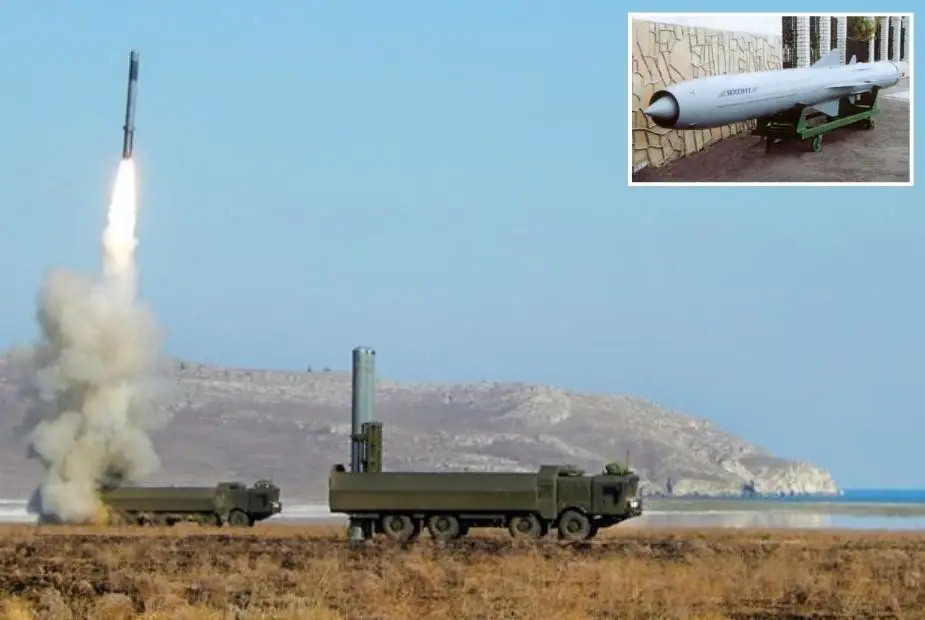Russia Converts Onyx Naval Missiles To Strike Ground Targets in Ukraine
Amidst the ongoing conflict between Russia and Ukraine, the Russian military arsenal is continuously evolving. Initially designed to target warships, the supersonic anti-ship Onyx missiles have been modified to also strike land targets. These missiles, part of the K-300P Bastion-P coastal defense missile systems, have been upgraded with new active seeker heads to enhance their effectiveness against enemy air defenses.
Follow Army Recognition on Google News at this link

Bastion" coastal missile system on the Black Sea coast and a Russian Onyx missile (right) (Picture source: Russian MoD)
Deployed in Crimea since its annexation by Russia, these missile systems have been utilized for precision strikes on Ukrainian military targets in the regions of Odesa and Mykolaiv. Despite Ukrainian efforts to disrupt missile guidance systems through electronic warfare, Russian forces have made advancements to increase the Onyx missiles' resistance to such countermeasures.
The P-800 Oniks missile, also known as Yakhont and SS-N-26 "Strobile", is an anti-ship cruise missile developed in Russia. This weapon system has been operational and in service since 2002, while the associated Bastion launch systems have been deployed since 2015. Variants of this missile include the surface-to-surface version measuring 8.6 meters in length and the slightly shorter air-to-surface version, which is 8.3 meters long. Both variants share a diameter of 0.67 meters. The launch weight varies by missile type: 3,000 kilograms for the surface-to-surface missile and 2,550 kilograms for the air-to-surface missile. The P-800 Oniks is equipped with a single warhead capable of carrying highly explosive and semi-armor-piercing submunitions. It is powered by a solid-fuel booster and a ramjet, enabling it to reach a range of 300 kilometers.
Besides their use in Ukraine, Onyx missiles have also been deployed in Syria, where they targeted land-based targets for the first time in 2016, striking positions held by ISIS and Jabhat al-Nusra in the governorates of Idlib and Hom. This adaptability not only demonstrates the missile's effectiveness in diverse combat scenarios but also reflects Russia's intent to further develop and diversify the applications of its military arsenal.
The development of missile variants such as the R-800 Yakhont for export and the R-800 Bolid for submarine launches, along with the Russian-Indian collaboration to produce the BrahMos missile, underscores the strategic importance of the Onyx missiles on the global stage. Ongoing discussions about expanding the arsenal with hypersonic missiles further indicate Russia's ambition to maintain a cutting-edge offensive capability.
Russia is converting its naval missiles into land-based missiles, a move that can be partially explained by a shortage of land-based missiles. This conversion allows Russia to address this shortfall while bolstering its striking capabilities. By adapting its naval missiles for land-based systems, Russia can deploy these armaments on a wider variety of platforms, thereby increasing operational flexibility and its ability to project military power across various environments and scenarios. This initiative also demonstrates Russia's ability to maximize the use of its existing resources to meet its defense needs, while enhancing its potential for deterrence and force projection on the ground.
News Russia Ukraine War























